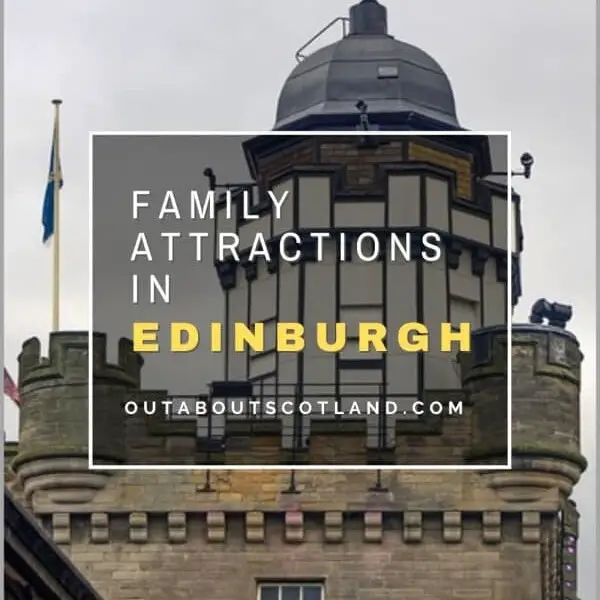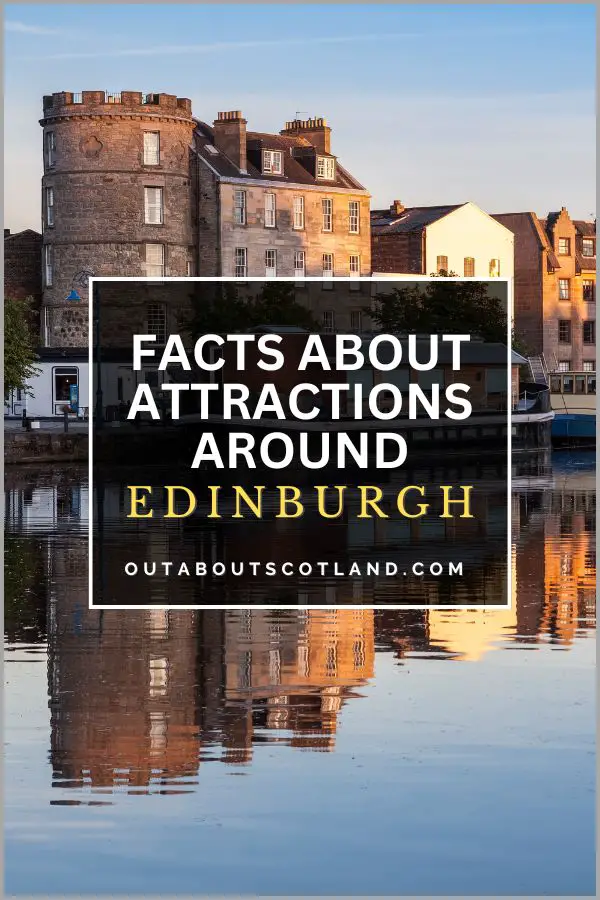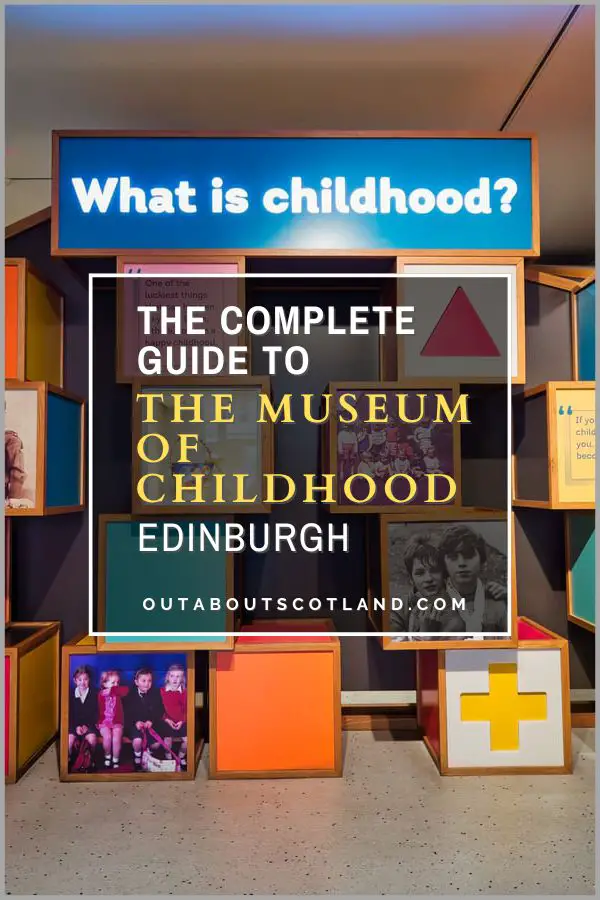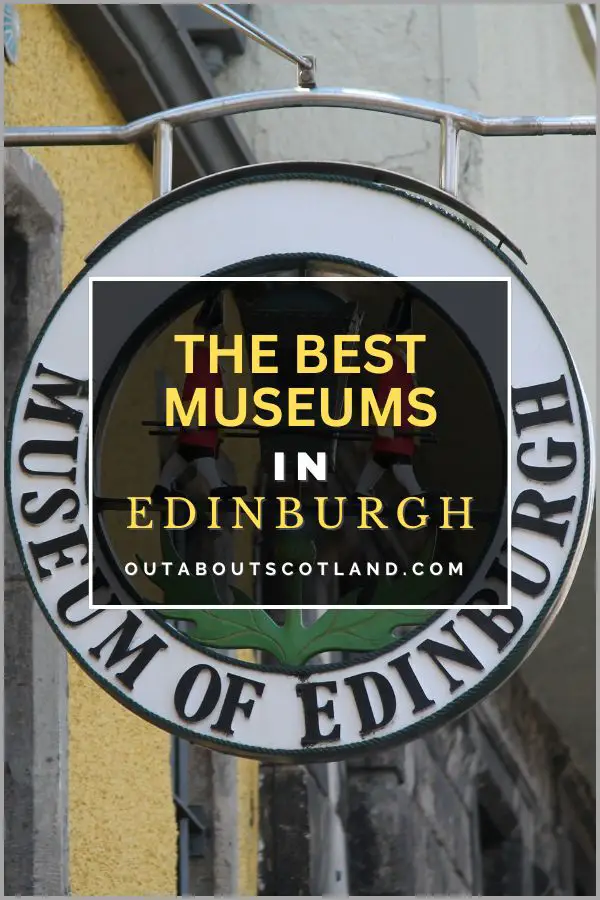Edinburgh, the capital city of Scotland, is a fantastic place for families to visit due to its fascinating history and wide range of activities suitable for all ages. The city hosts 12 major cultural events each year, and it’s also a UNESCO City of Literature as well as a UNESCO World Heritage Site.
Discover the best places to visit in Edinburgh with this complete visitor guide, which features a comprehensive list of the top attractions that the whole family will enjoy.
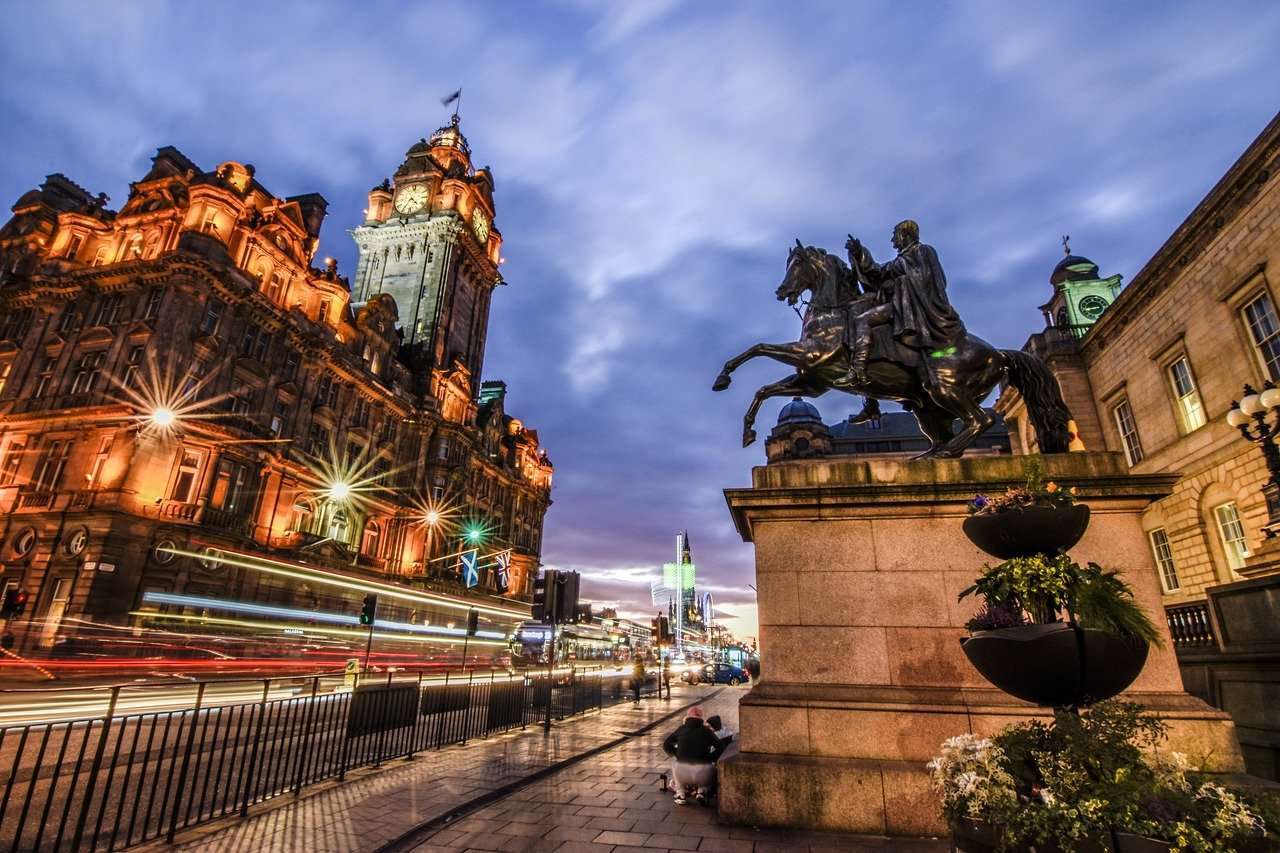
The Best Things to Do in Edinburgh for Families
There are a huge number of family attractions in Edinburgh that are guaranteed to give both children and adults a great time, whether climbing to the top of an extinct volcano, wandering down the mediaeval Royal Mile, or exploring an incredible castle.
These attractions and many more are all located in a compact city that’s easy to navigate and oozes culture and history from every nook and cranny. In fact, Edinburgh has so many attractions that it can be a bit overwhelming trying to decide which ones to visit.
In this article, you’ll find a comprehensive guide with suggestions on where to go and what to do while you’re in Edinburgh. Some of the attractions in the list below are historic in nature – something that’s unavoidable when coming to a city with over a thousand years of history – but I’ve also included modern attractions as well as a few in the great outdoors.
| Edinburgh Sightseeing Advice |
|---|
| Planning to visit Edinburgh’s top attractions? You’ll save time and money by purchasing a pre-paid hop-on hop-off bus pass. |
| The pass allows unlimited travel in Edinburgh for 48 hours and includes free entry to Edinburgh Castle, the Royal Yacht Britannia and Holyrood Palace. |
| Buy your Royal Attractions Bus Pass here. |
Edinburgh Castle
- Address: Castlehill, Edinburgh, EH1 2NG
- Contact details: Tel 0131 225 9846
- Out About Scotland complete Complete Guide: Edinburgh Castle
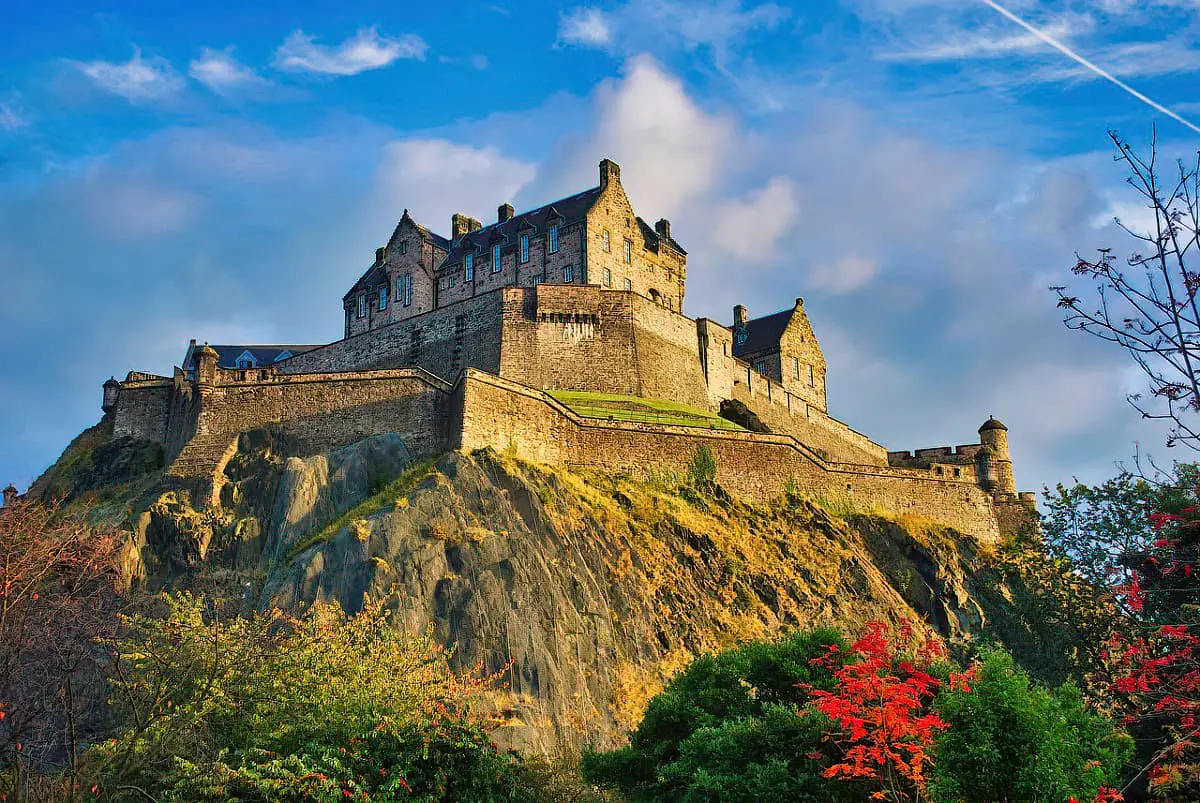
Edinburgh Castle is everything that’s great about the best Scottish attractions. It’s awe-inspiring, very old, in a stunning location and has more things to see and do than you’ll be able to fit into one visit. There are ancient buildings to walk through, lots of interesting artefacts to look at, some excellent museums to wander around and a superb collection of exhibitions, gift shops, and cafés.
You can reach the castle entrance by following The Royal Mile to the very end of its northernmost point, where you’ll be presented with a magnificent open courtyard. Every year, the renowned Edinburgh Military Tattoo takes place there, attracting military bands and performers from all over the world to entertain a quarter of a million visitors while more than 100 million people watch it on TV.
The Royal Palace is perhaps the most impressive section of the castle as it houses the royal apartments as well as the crown room where the Honours of Scotland are kept. These artefacts are the Scottish equivalent of the Crown Jewels in the Tower of London, and they’re no less magnificent, comprising a crown, sceptre, and the Sword of State.
The Stone of Scone, the ancient stone upon which Scottish monarchs were crowned, is also held within the vaults of the crown room, and all the exhibits are presented with information boards that will help children understand their history.
Holyrood Palace
- Address: Canongate, The Royal Mile, Edinburgh, EH8 8DX
- Contact details: Tel 0303 123 7306
- Out About Scotland complete guide: Holyrood Palace
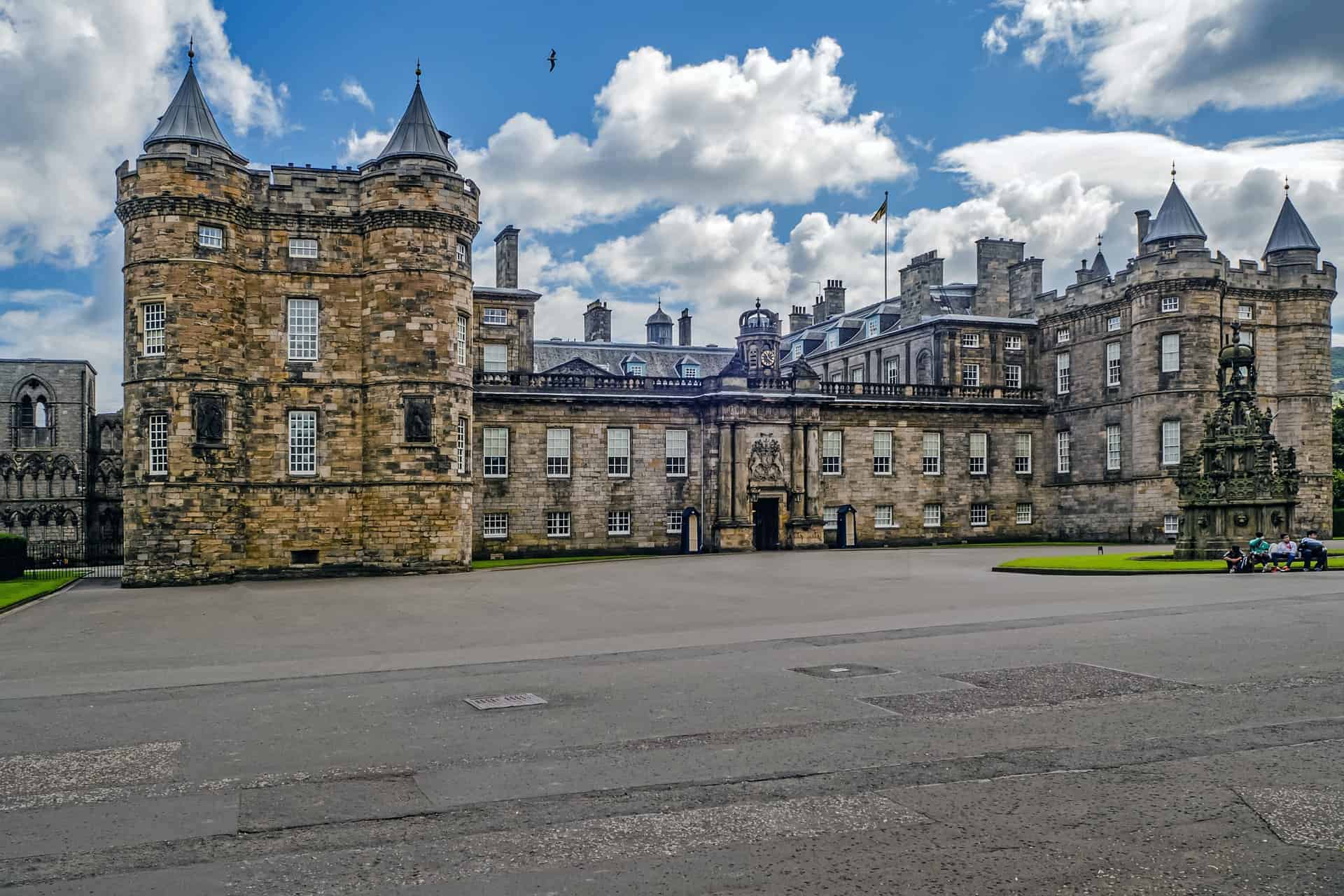
The palace of Holyrood House (as it’s officially known) is the main residence of the British monarchy in Scotland, located at the opposite end of the Royal Mile from Edinburgh Castle. The palace has a long history dating back to the 12th century and it’s still used to host state occasions to this day.
Holyrood Palace offers lots of activities for visitors, including viewing the official staterooms of Mary Queen of Scots, the Throne Room, the ruins of Holyrood Abbey, and the beautiful palace gardens.
The route through the interior rooms will take you on a tour of the history of the building, including the 17th-century King’s Apartments, the Great Gallery, and the 16th-century apartments where Mary Queen of Scots lived. Following a visit to the palace’s interior, you can explore the ruins of Holyrood Abbey and then stop by the café. The quality of the food is superb, and although it’s a little pricey, it’s well worth the expense.
The Royal Yacht Britannia
- Address: Ocean Terminal, Leith, Edinburgh, EH6 6JJ
- Contact details: Tel 0131 555 5566
- Out About Scotland complete guide: The Royal Yacht Britannia
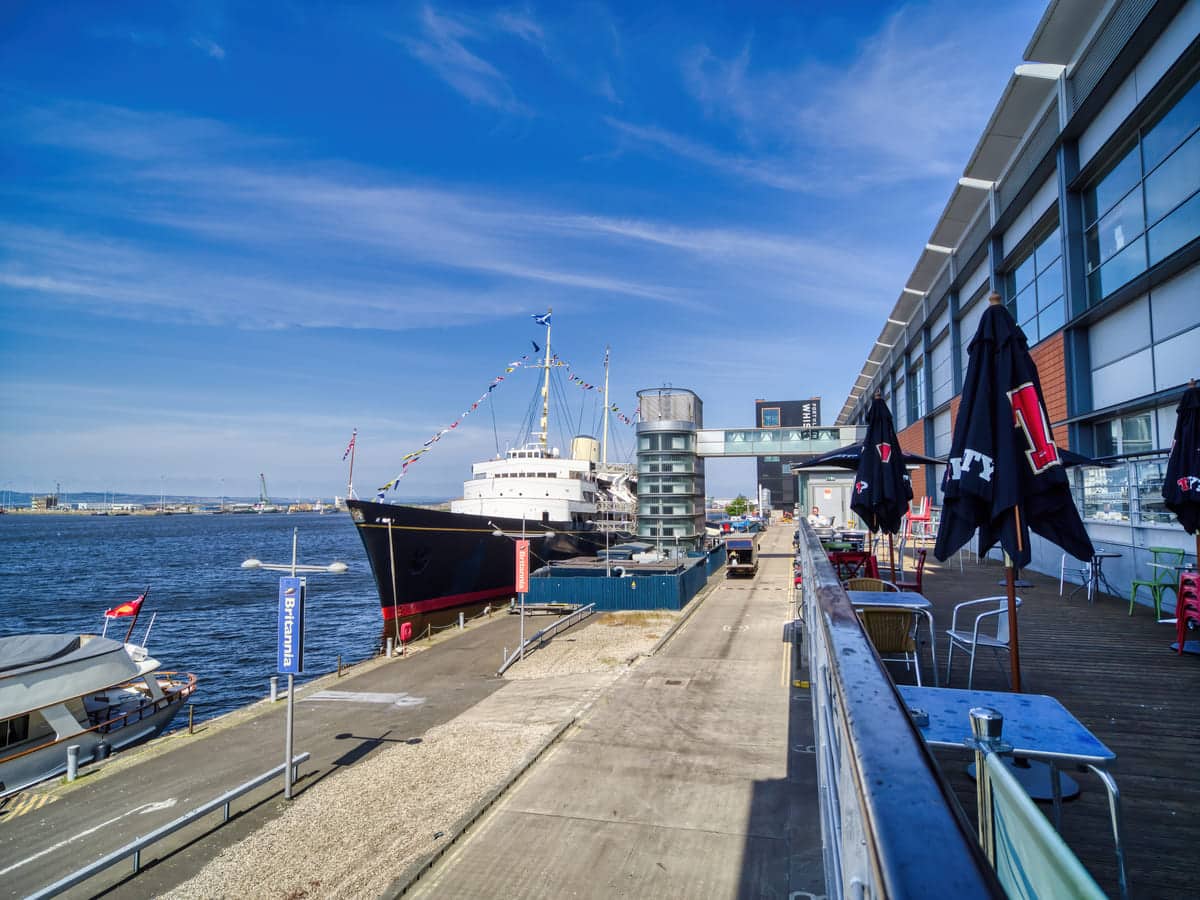
The Royal Yacht Britannia is the former yacht of the British Royal Family which now takes pride of place at the Ocean Terminal shopping centre at Leith.
Over the course of her working life, Britannia sailed over 1 million miles around the world, and she’s now open year-round for visitors to follow in the footsteps of world leaders as they walk through her beautiful rooms.
As you walk around Britannia’s five main decks, you can listen to an interesting audio guide that explains what life was like on board, not only for the royal inhabitants but also for the Royal Navy crew that manned her during her voyages.
Starting at the bridge, you pass through the state apartments, the crew quarters, and the engine room before finally reaching the Royal Racing Yacht, Bloodhound. There are some fascinating parts of the ship that all ages will enjoy visiting, like the huge state banquet room with its massive dining table and the gleaming Rolls-Royce Phantom which travelled on the ship along with the Royal Family.
If you fancy a wee treat, you can pick up some fantastic homemade fudge in the NAAFI sweet shop, and there’s a highly recommended restaurant in the Royal Deck Tea Room where you can sample top-notch Scottish cuisine.
The Royal Edinburgh Zoo
- Address: 134 Corstorphine Rd, Edinburgh, EH12 6TS
- Contact details: Tel 0131 334 9171
- Out About Scotland complete guide: The Royal Edinburgh Zoo
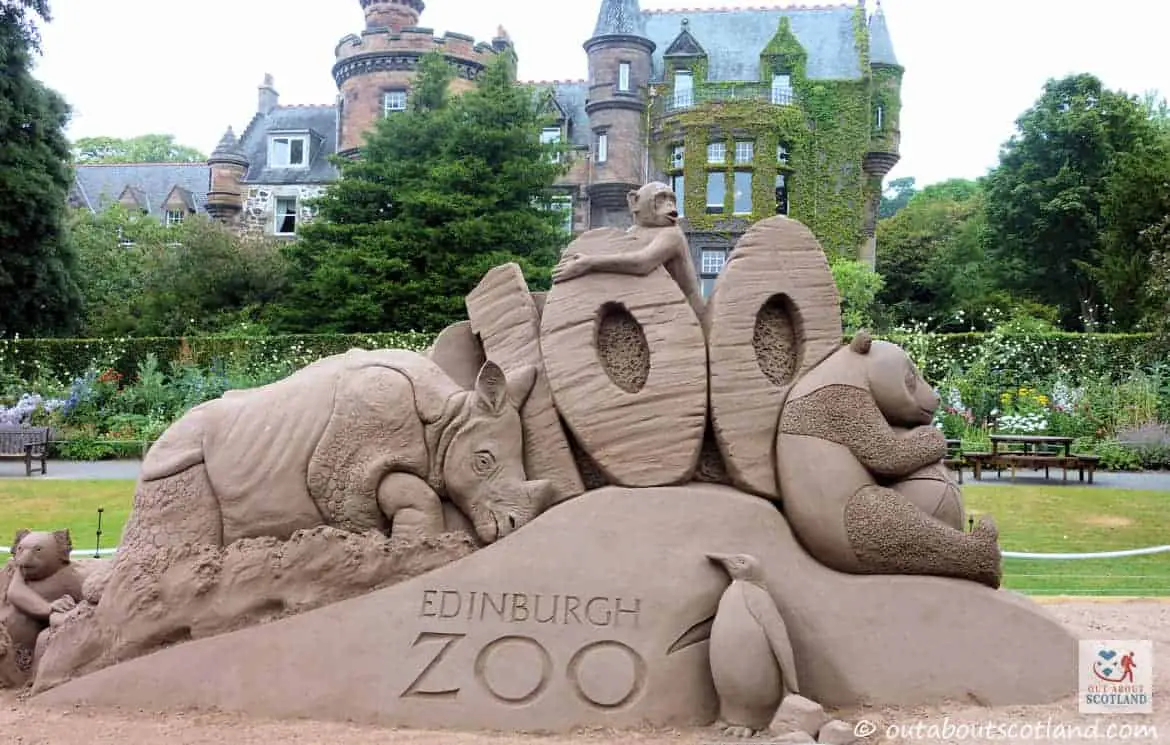
Set over 82 acres of parkland on the south-facing slopes of Corstorphine Hill, Edinburgh Zoo is the second most popular tourist attraction in Scotland after Edinburgh Castle. Edinburgh Zoo has a huge amount of things to see and do, and with over a thousand animals to look at including lions, monkeys, penguins, tigers, you’re definitely not going to get bored.
The enclosures that house these animals are exceptional, especially Penguins Rock which has Europe’s largest outdoor penguin pool, and the Budongo Trail where you can watch chimpanzees in one of Europe’s most innovative man-made habitats.
Other enclosures are home to exotic birds, reptiles, insects, and mammals from all over the world, with each habitat clearly signposted and marked so that you won’t ever find yourself getting lost. Even so, as a top tip, I recommend going to their maps and guides page which has an interactive map and a free downloadable pdf so that you can get to grips with the layout before leaving home.
Facilities include a gift shop, two restaurants, and a coffee shop, and there are several smaller fast-food eateries dotted about as well. The site is wheelchair accessible, but as it’s on a hill it might be difficult to reach the uppermost areas.
Calton Hill
- Address: City Observatory, 38 Calton Hill, Edinburgh, EH7 5AA
- Contact details: NA
- Out About Scotland complete guide: Calton Hill
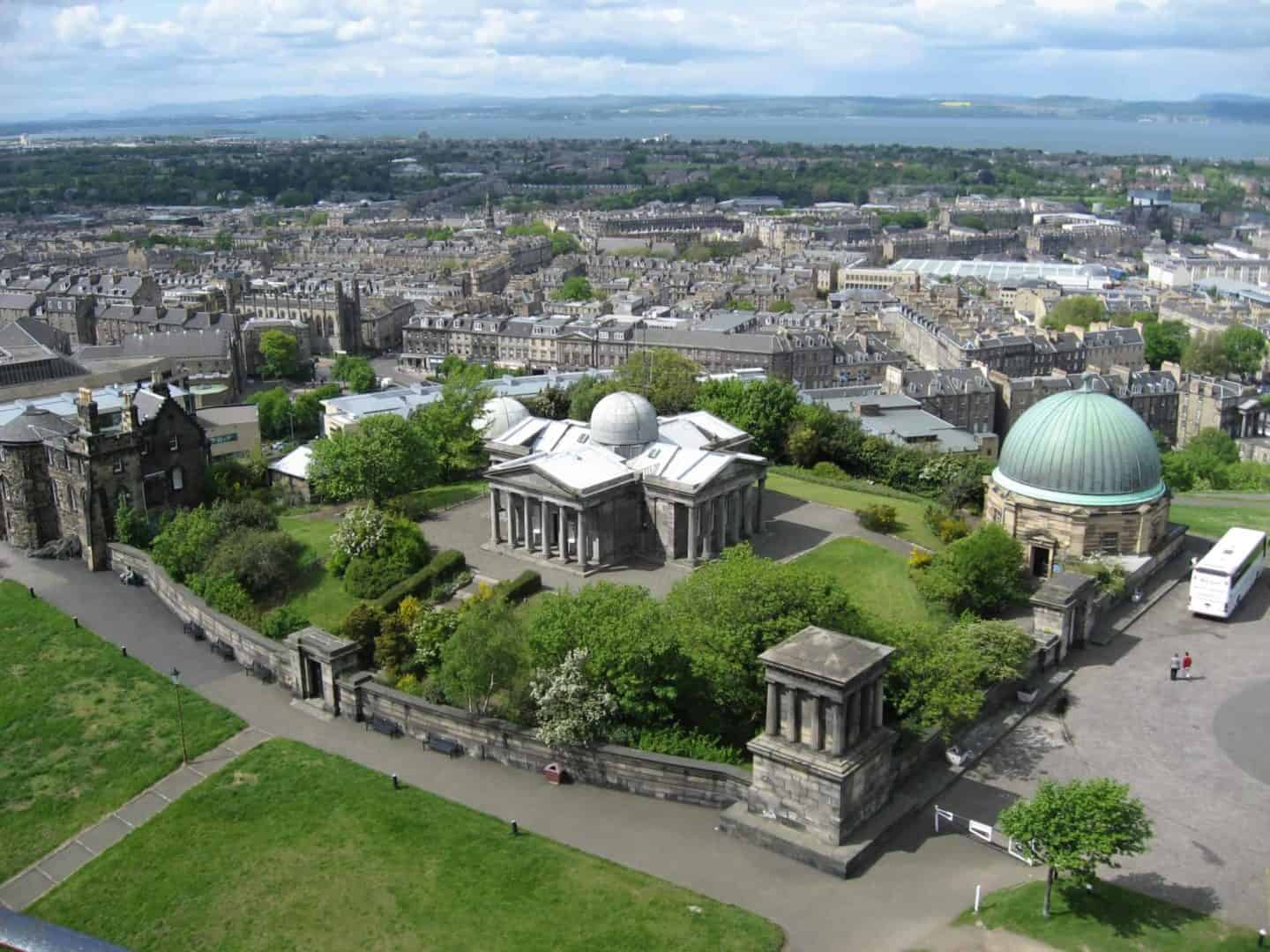
Calton Hill is a large mound located close to the hustle and bustle of Princes Street, where a collection of Edinburgh’s most famous landmarks are situated in one compact area. The hill is included in the UNESCO World Heritage status that’s been awarded to the city, which is hardly surprising considering the amount of history you’ll find there.
If you walk east from the city centre you’ll be guided by tourist information signs that direct you to the top of the hill. From there, you can take in breath-taking views of the city, from the rising faces of Salisbury Crags to the south to the dramatic views of the city centre to the west.
Once at the top, you’ll find lots of interesting landmarks on Calton Hill, including the National Monument, the Nelson Monument, and the City Observatory.
The National Monument is Scotland’s memorial to the Scottish soldiers and sailors who died during the Napoleonic Wars, and it’s the dominant feature of Calton Hill, while just a few yards away is the commemorative tower that honours Admiral Nelson. Near the tower is the Dugald Stewart Monument, which offers a gorgeous view of Edinburgh and is one of the most photographed landmarks in the city.
Calton Hill has recently been redeveloped as a tourist attraction by Collective, a group that has installed a restaurant, an art gallery, and a viewing platform on the site of the old city observatory.
Camera Obscura and World of Illusions
- Address: Castlehill, Royal Mile, Edinburgh, EH1 2ND
- Contact details: Tel 0131 226 3709
- Out About Scotland complete guide: Camera Obscura and World of Illusions
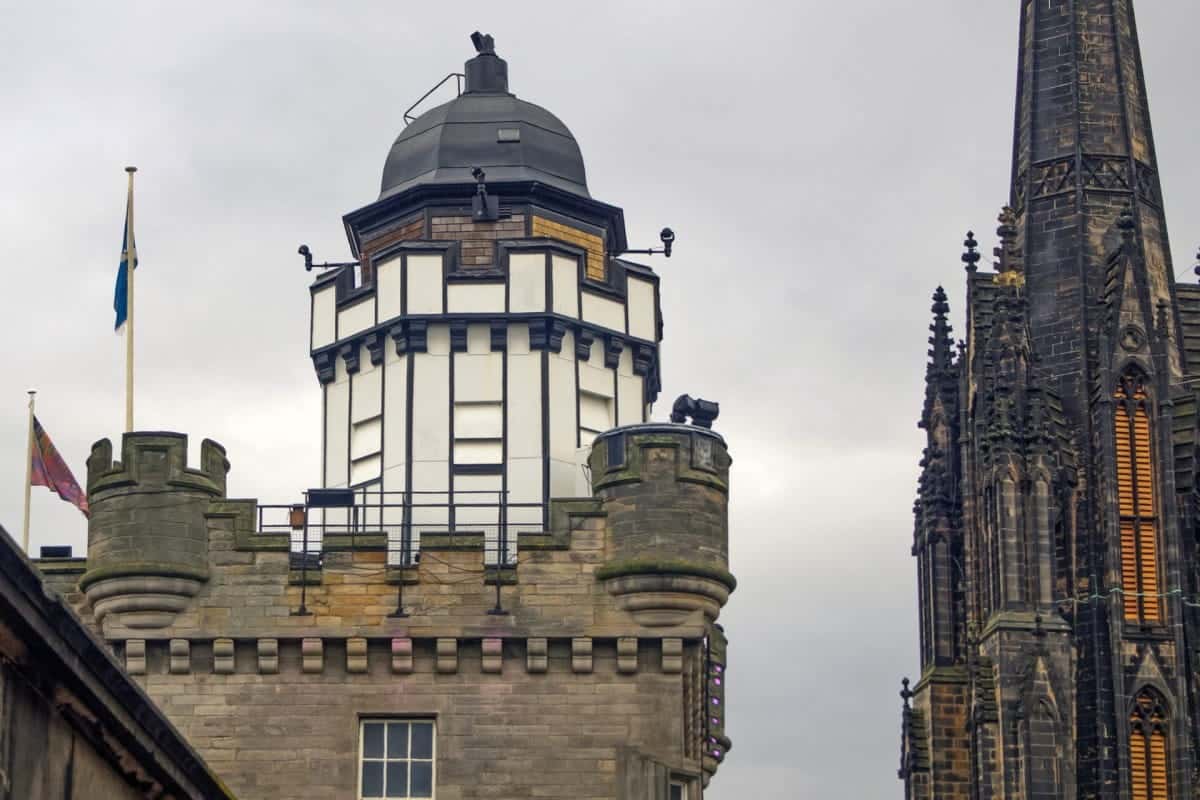
Camera Obscura and World of Illusions is one of the most-visited tourist attractions in the city, helped no end by the fact that it’s located in the centre of the main sightseeing area of Edinburgh. Directly opposite, you’ll find The Scotch Whisky Experience, and Edinburgh Castle is located just a few hundred feet up Castle Hill.
At Camera Obscura, visitors get to experience a variety of optical illusions set across six floors inside a purpose-built Victorian building, with each floor dedicated to different displays of light and sound. One floor, for example, features a collection of holograms, while another has a spinning vortex wheel and a mirror maze.
Although Camera Obscura is advertised as a modern attraction, it actually has a lot of history behind it. The very first display was created as a way for an Edinburgh telescope maker to showcase his work in the early 1800s, but it was also used in an exhibition about urban planning before passing to a university and then to the current owners, who added the new ‘World of Illusions’ exhibitions.
The earliest display, the Camera Obscura, is located on the top floor where visitors can see an image of the Edinburgh city skyline projected onto a white board. This was something that wowed crowds back in the 1800s, and it’s still an interesting thing to see today.
Craigmillar Castle
- Address: Craigmillar Castle Rd, Edinburgh, EH16 4SY
- Contact details: Tel 0131 661 4445
- Out About Scotland complete guide: Craigmillar Castle
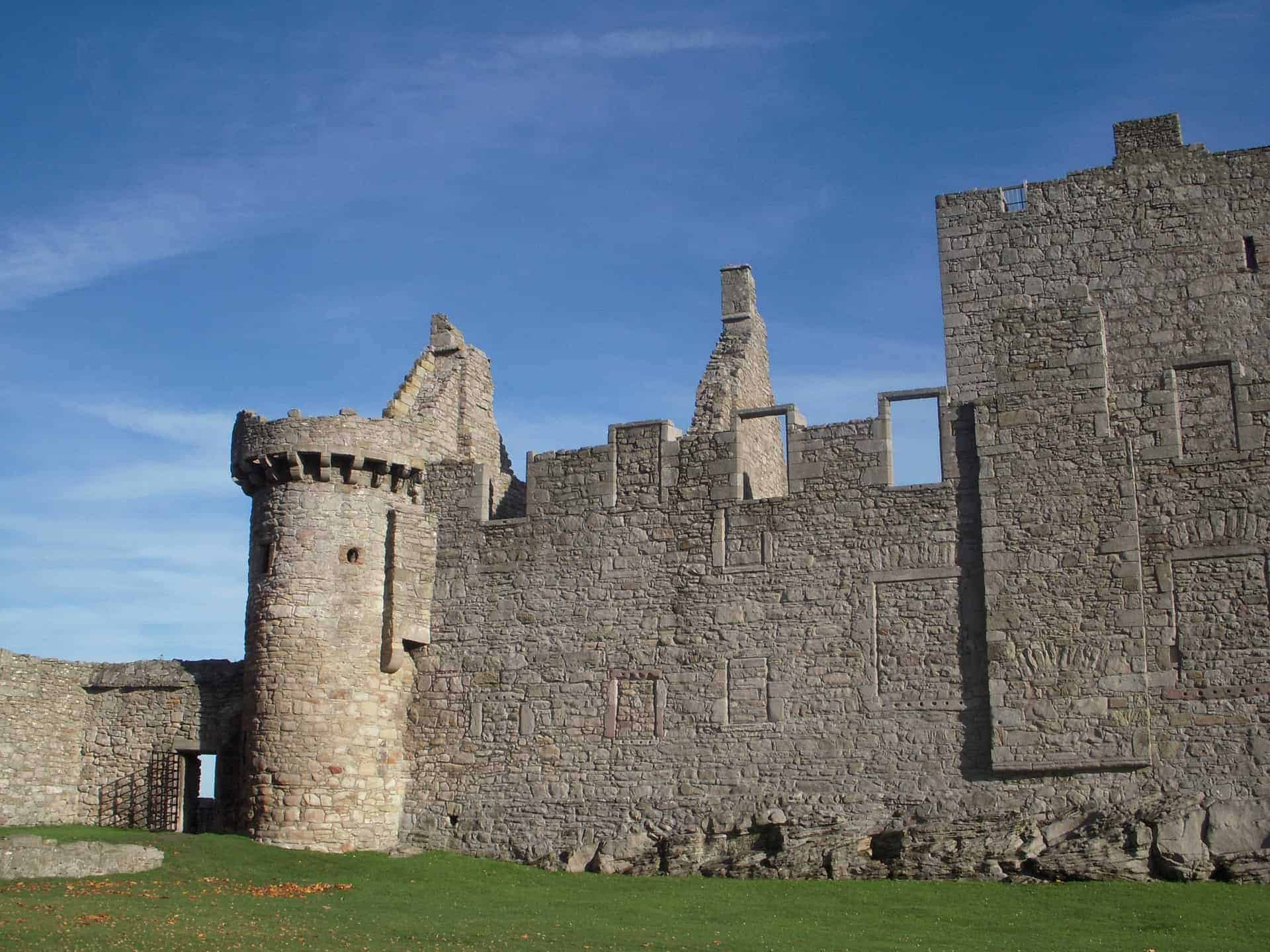
Despite taking less than 30 minutes to reach by bus (number 14) from Princes Street, Craigmillar Castle is located in an area that sees hardly any tourists. This castle is much smaller than the one in the city centre, but it played an important role in Scotland’s history as it was used extensively as a royal stronghold during times of political unrest in the capital.
Mary Queen of Scots stayed there several times, first as a guest and later in its jail, and you’ll discover more about the story of Mary and her time at Craigmillar when you visit thanks to a number of information panels dotted around the site.
The castle consists of a large tower house that was built in 1425 and is enclosed by an outer courtyard surrounded by high stone walls. It must have been a near-impenetrable fortress back in the day and it’s no wonder royalty chose to hide themselves away there, especially considering the tower house has walls that are an incredible eleven feet thick!
Externally, you can walk around the remains of formal gardens and explore the ruins of a private chapel, while inside there are lots of winding stairways to climb and enough nooks and crannies to keep kids occupied for a good hour or two.
Sadly, there’s no café at this Historic Environment Scotland site, so if you need refreshments you’ll have to head back into the city. Before you do, I recommend taking a walk around the heavily wooded Craigmillar Castle Park which offers a nice walk and plenty of spots to sit and admire the view.
Cramond Island
- Address: Cramond, Edinburgh, EH4 6NU.
- Contact details: NA
- Out About Scotland complete guide: Cramond Island
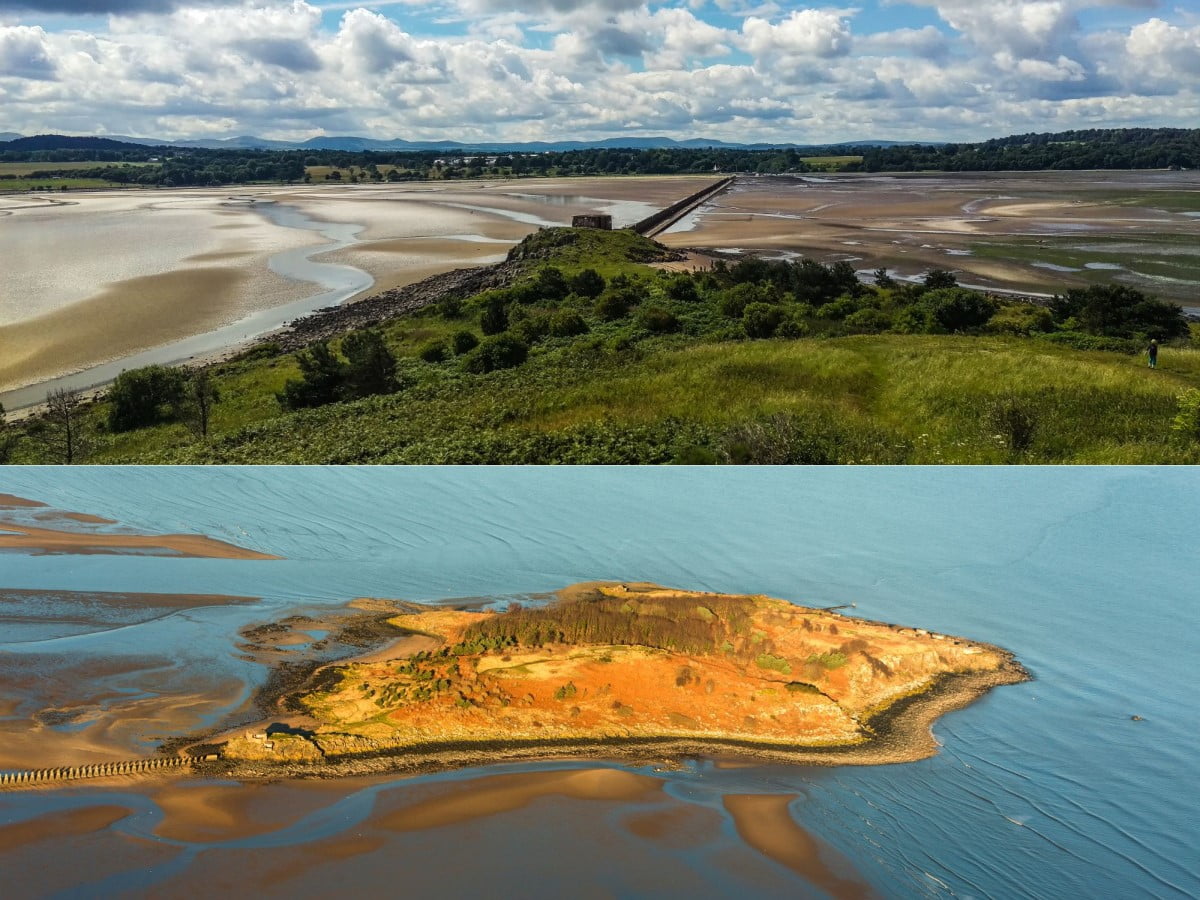
One of the best reasons to visit Edinburgh is to discover how diverse it is in terms of landscapes. The city centre features a mix of mediaeval and modern buildings; there are huge green spaces at Holyrood Park and The Meadows; there are hills galore, including the Pentland Hills and Blackford Hill; and there are a number of coastal attractions, including Portobello and Cramond.
The latter, Cramond village, lies on the northwest border of Edinburgh, next to the opening of the River Almond, where it meets the Firth of Forth. The village is easily reached from Edinburgh city centre within half an hour by bus (numbers 41, 32, and 36) so it’s an ideal place to unwind away from the noise of Princes Street, with the nearby beach at Silverknowes offering a fairly wide expanse of sand as well as a boulevard that’s ideal for pushchairs and wheelchairs.
Looking out to sea, you’ll notice a WWII anti-tank barricade leading to a small island which is only accessible when the tide is out. To get there, check the tide timetable at the causeway and then walk along the barricade. It’s a short walk (maybe 20 minutes), but it becomes impassable once the tide returns, so visitors must keep an eye on the tide times.
Cramond Island isn’t particularly big, but there are lots of places to sit and enjoy the view, with a large grass area in the middle and a couple of small pebble beaches at the edges. The northern side of the island has several derelict WWII storage buildings that are worth a look, but watch where you step as there’s lots of broken glass in them.
The highest point of Cramond Island rises 68 feet above sea level, where it offers a good spot to look across the Firth of Forth and the Forth bridges. The view is very pretty, and on a sunny day, it’s downright stunning.
Gilmerton Cove
- Address: 16 Drum St, Gilmerton, Edinburgh, EH17 8QH
- Contact details: Tel 07914 829177
- Out About Scotland complete guide: Gilmerton Cove
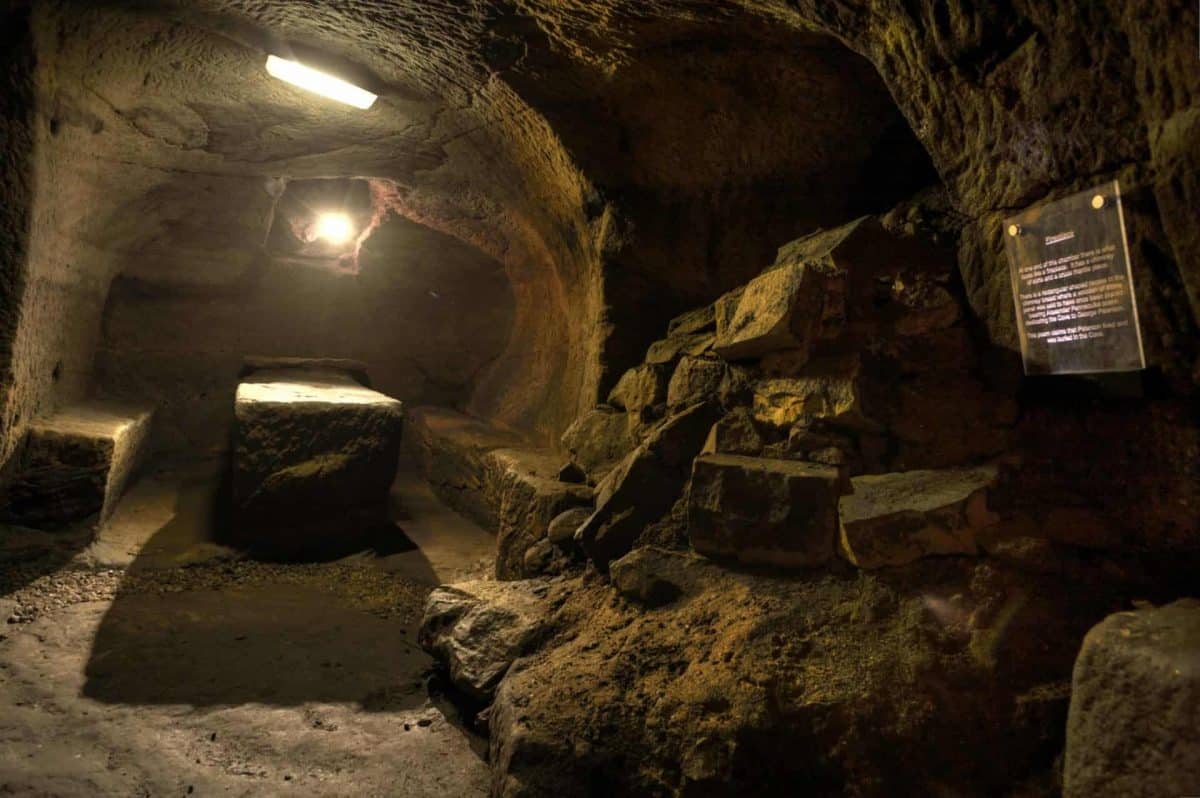
If you’d like to experience a completely different type of tourist attraction that has a fascinating history while being just a wee bit creepy, Gilmerton Cove should sit at the top of your sightseeing itinerary. What you’ll discover when you visit is a series of man-made underground rooms that were dug out of the earth hundreds of years ago for a purpose that’s still unknown to this day.
Gilmerton is a little tricky to find if you’re not familiar with Edinburgh, so your best options for finding this attraction are to either book a taxi or take the bus (numbers 3, 29, 30, 33). Once at Gilmerton, look for a small white building on Drum Street near the crossroad, which looks unremarkable except for a couple of Gilmerton Cove signs in the windows.
Sadly, this attraction does not allow you to visit at any time (I guess due to safety concerns), so you have to book in advance for a guided tour that will take you through the cove to explore each chamber while listening to stories from the tour guide about how and why the caves were dug.
Some theories suggest the caves were originally smuggler’s tunnels that were expanded into storerooms over the years. Others suggest they were secret drinking dens (there are benches carved into the rocks), and there are even stories that say the caves were the site of witchcraft rituals.
Whatever their true nature, it’s unlikely we’ll ever know for sure, but we do know the tunnels stretch much further than previously thought thanks to recent surveys that suggest the network of tunnels in Gilmerton Cove could be twice as big as previously thought.
Holyrood Park
- Address: Queen’s Drive, Edinburgh, EH8 8HG
- Contact details: NA
- Out About Scotland complete guide: Holyrood Park
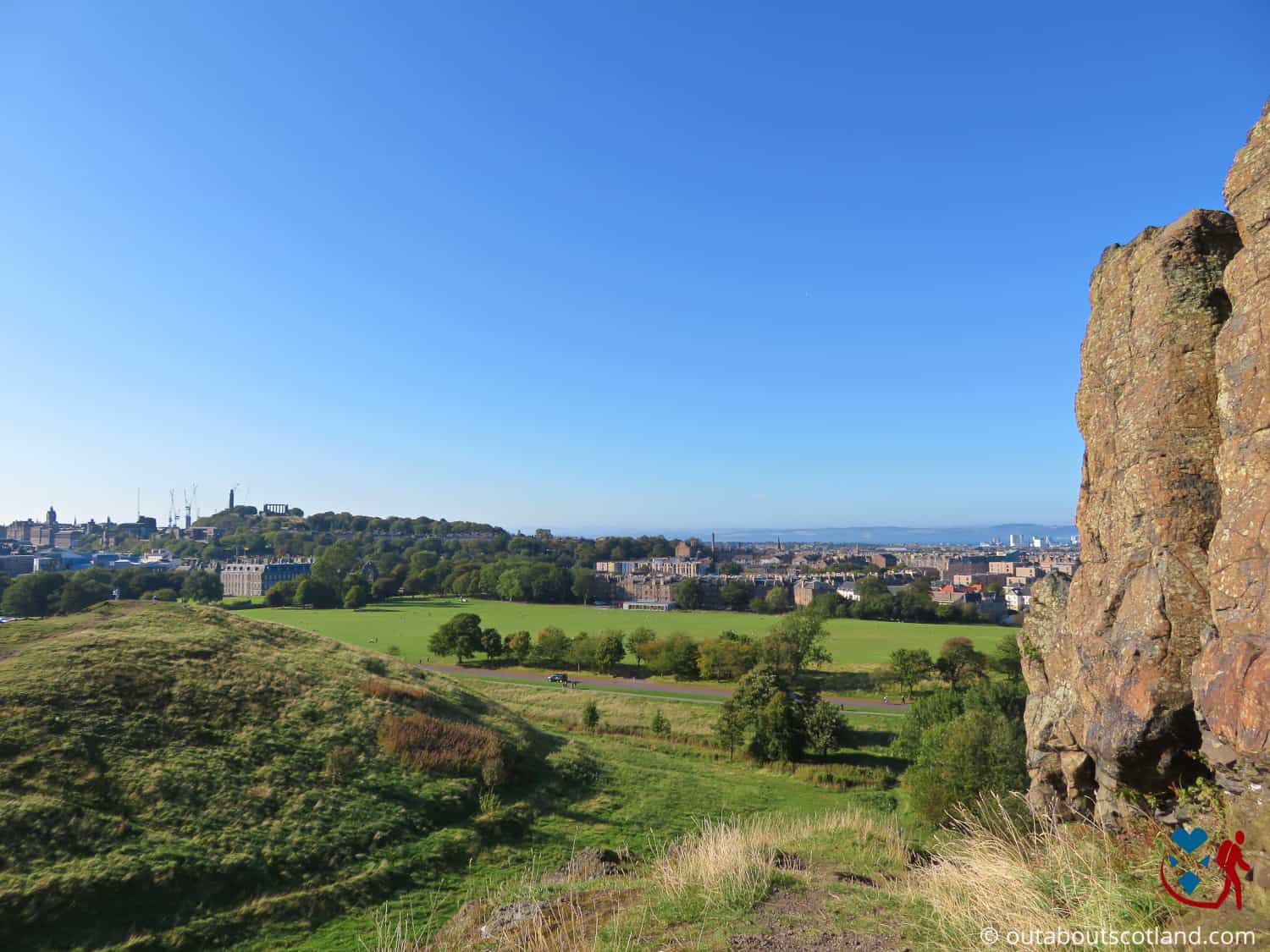
Situated about a mile to the east of Edinburgh Castle, Holyrood Park is an outstanding area of natural beauty that offers tourists and locals alike a haven of tranquilly in the midst of Scotland’s capital city.
Although the park is centrally located in Edinburgh, it has an array of natural wonders to explore over its 650-acre wilderness. Wild meadows, peaceful lochs, mountain-like ridges, and swathes of gorse take visitors on a Highland-esque journey all within a few minute’s walk from Holyrood Palace.
The most accessible route onto the paths that lead into the park is to walk down the Royal Mile towards the Scottish Parliament building where you can’t fail to miss the Salisbury Crags (cliff faces on the west side of the park).
You can walk around the perimeter of Holyrood Park on concrete footpaths or you can drive along the road that winds its way across it, but the best option, in my opinion, is to walk through the middle of it.
If you’re feeling adventurous, you can climb up to the 800-foot summit of Arthur’s Seat, the highest point in Edinburgh, to take in breath-taking views of the city. Be aware that although the path to the top is well-used, it’s also a hard climb, and in winter the track is very muddy.
John Knox House
- Address: Scottish Storytelling Centre, High St, Edinburgh, EH1 1SR
- Contact details: Tel 0131 556 9579
- Out About Scotland complete guide: John Knox House
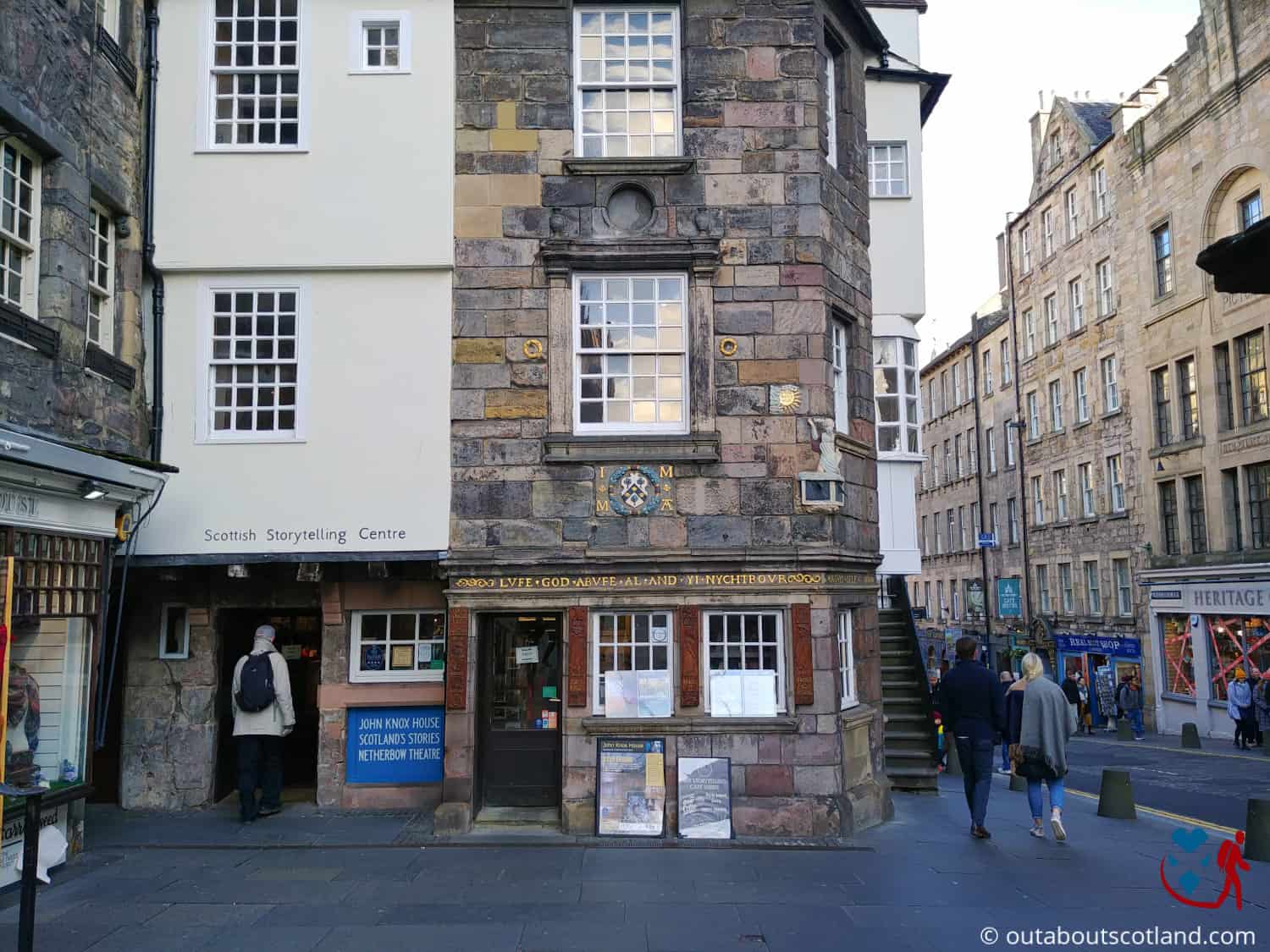
The Royal Mile in Edinburgh is one of the best-preserved mediaeval streets in Europe, and exploring its eclectic collection of tenements and high-rise buildings is one of the highlights of any visit to the city.
The iconic John Knox House, which is located halfway up High Street, is one of the most interesting buildings on the Royal Mile and is well worth a visit if you find yourself walking past. John Knox was one of Scotland’s most influential people in the 16th century, who became famous for his epic sermons in St. Giles Cathedral as well as his battles against Mary, Queen of Scots.
Although Knox only spent a short time at the house, its importance meant it became a museum to both him and the time he lived in, which visitors can experience when they explore each room in the three-story building.
These rooms are filled to the rafters with fascinating artefacts as well as displays that tell the story of the other noteable resident, James Mossman, who met a grisly end after being convicted of treason when he illegally minted coins in support of Queen Mary.
The gift shop on the ground floor joins onto The Scottish Storytelling Centre which features a reasonably-priced café, while the upper floors have restored artworks, furniture, and displays about Knox and Edinburgh in the 1500s.
Museum on the Mound
- Address: The Mound, Edinburgh, EH1 1YZ
- Contact details: Tel 0131 243 5464
- Out About Scotland complete guide: Museum on the Mound
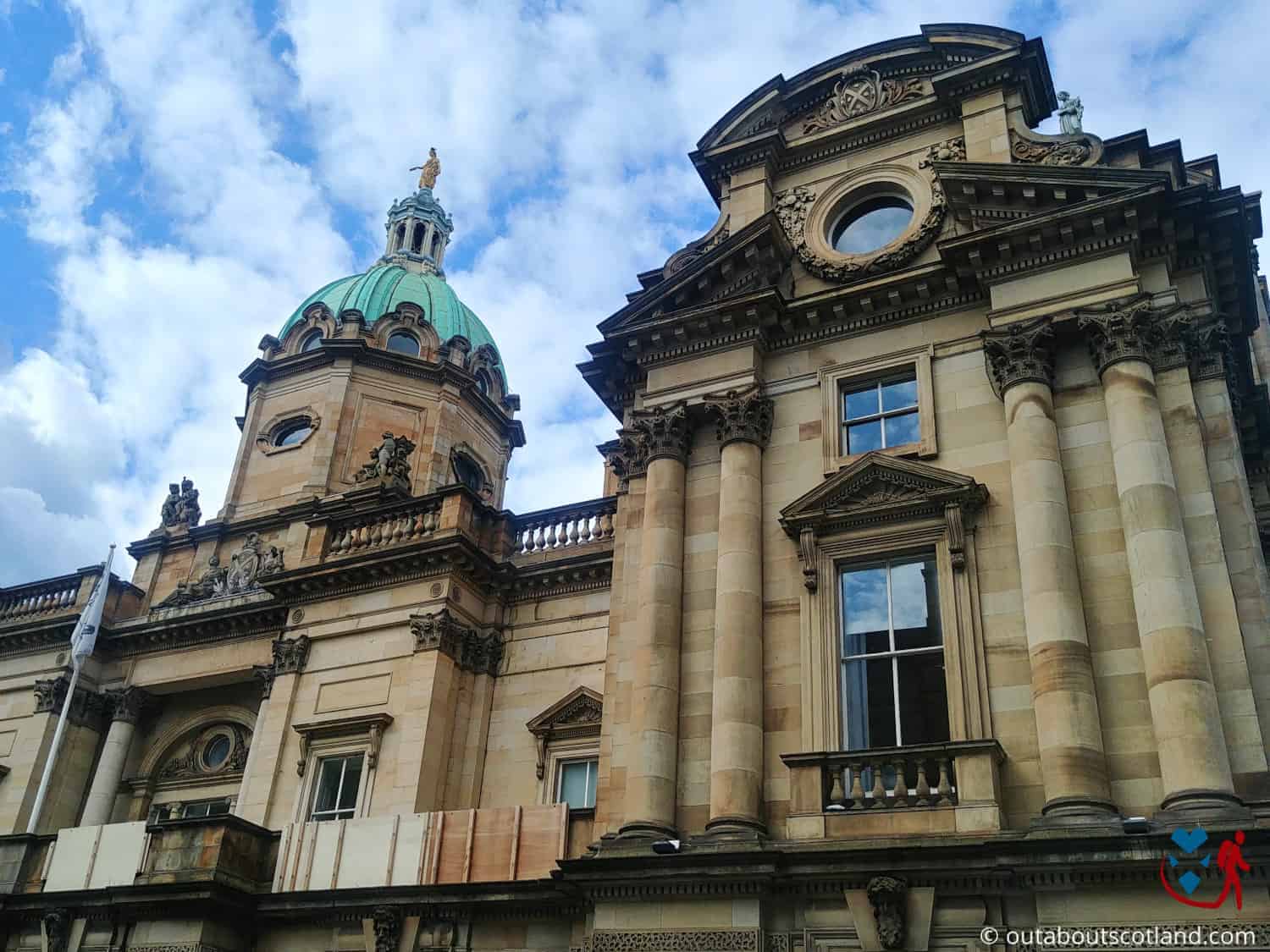
Although Edinburgh trails behind Glasgow when it comes to free attractions, there are a few that are definitely worth mentioning, including this one situated on The Mound overlooking Princes Street Gardens. The Museum on the Mound is solely dedicated to money, with a collection of interesting exhibits that include printed notes, the earliest credit cards, historic safes, and exhibits about crime and punishment.
The museum is run by the Bank of Scotland (one of the oldest banks in the world) and is housed in their former head office which was built on more than a million cartloads of earth that were dug up when Edinburgh’s New Town was built (hence the name, Museum on the Mound).
This is by no means the largest museum in Edinburgh but it’s certainly one of the most interesting, and there are several exhibits that you’re unlikely to see anywhere else in Britain, such as the display of £1 million in banknotes as well as the oldest banknote in Scotland.
Perhaps the best thing about the museum is that there are lots of activities to keep children entertained including activity books, a safe-cracking display, and interactive coin-striking sessions. Adults, meanwhile, will no doubt enjoy looking at some of the earliest photos of Edinburgh along with artefacts from the first days of the city.
The National Museum of Scotland
- Address: Chambers Street, Edinburgh, EH1 1JF
- Contact details: Tel 0300 123 6789
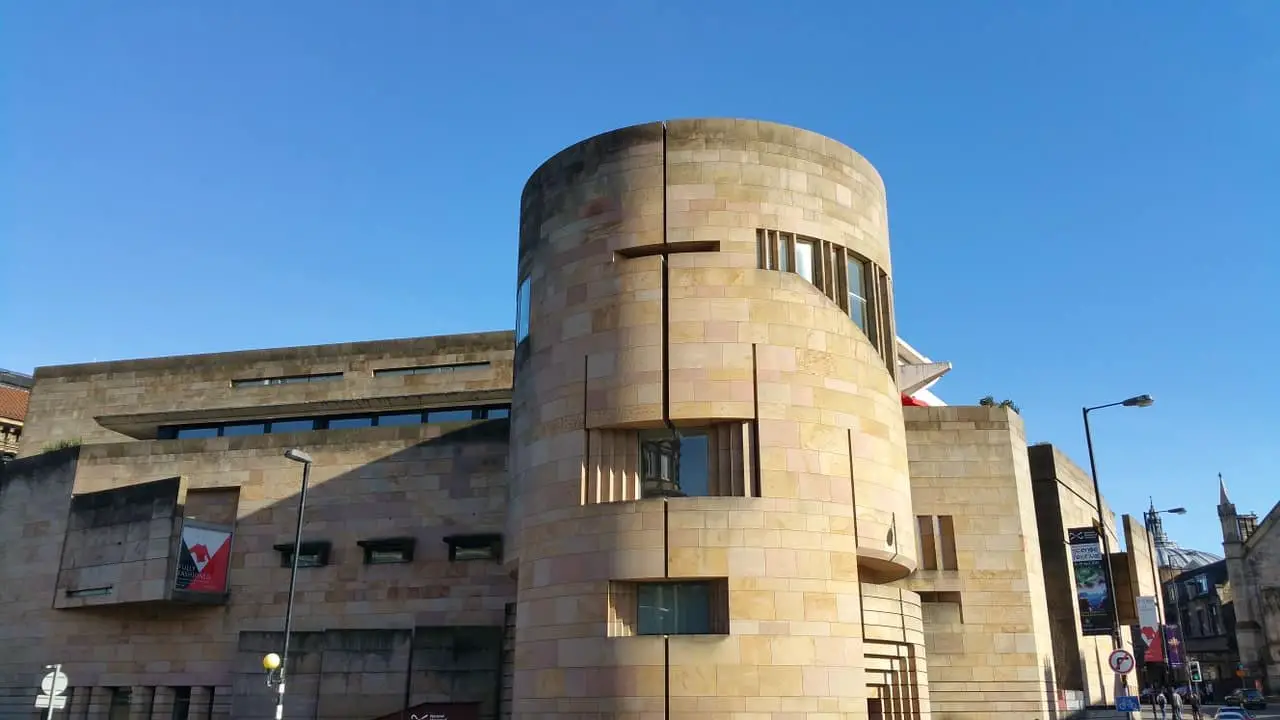
The National Museum of Scotland is the largest museum in the country. Set across five floors, this popular tourist attraction takes visitors on a voyage of discovery through a series of collections that range from East Asian exhibits to Scottish culture.
There’s so much to see at The National Museum of Scotland that you’ll struggle to fit it all into one day, so my recommendation is to explore it over a couple of days alongside the other attractions in this article.
The museum is split into two halves: a Victorian arcade that has been recently restored and a modern gallery. While the modern building is by far the largest part of the musuem, the Victorian building is far more impressive thanks to its enormous vaulted iron and glass ceiling.
The galleries have been designed to appeal to adults and children alike, and you’re guaranteed to find something that will interest you whether it’s art and design, natural history, technology, archaeology, or world culture.
This museum can be a wee bit overwhelming for first-time visitors so it’s just as well there are a couple of cafes inside to take a break. Admission is free, and the museum is open 7 days a week.
Princes Street Gardens
- Address: Princes Street, EH2 2HG
- Contact details: NA
- Out About Scotland complete guide: Princes Street Gardens
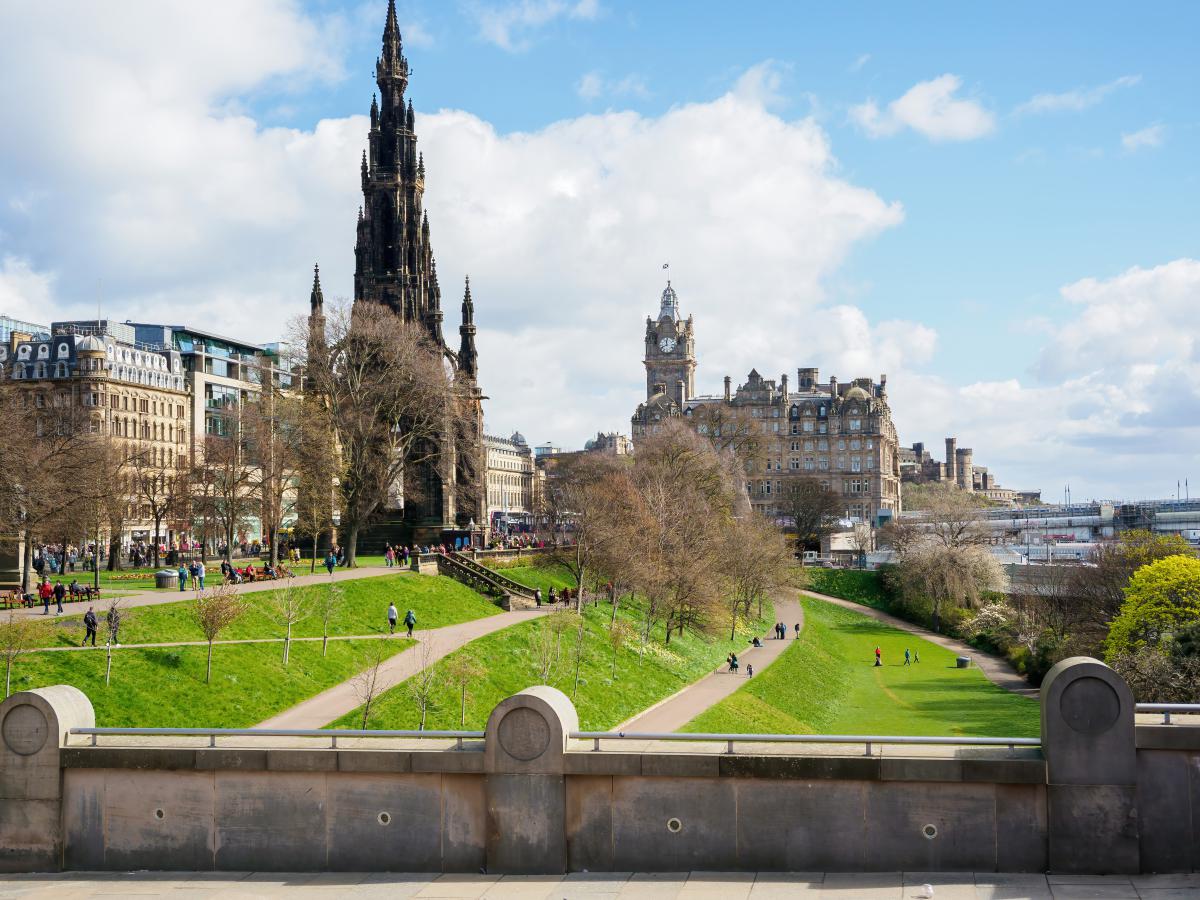
Princes Street Gardens run alongside Princes Street (obviously) in Edinburgh and are a popular destination for tourists thanks to several landmarks including the Scott Monument and the Ross Fountain. The gardens were built on top of the Nor Loch, which was a polluted body of water underneath Edinburgh Castle that was drained in 1820.
This green oasis in the heart of the city runs the entire length of Princes Street from the Church of St. Cuthbert to Waverley Station, in an area that covers an impressive 37 acres. Coupled with The Meadows and Holyrood Park, it’s no wonder that Edinburgh is officially the greenest city in Britain.
There are a number of year-round features that make Princes Street Gardens a must-visit for any tourist, the foremost being the 200-foot-tall Scott Monument. This beautiful stone structure is dedicated to the novelist Sir Walter Scott, and is, in fact, the world’s largest monument dedicated to a writer.
Other landmarks in the gardens include the Ross Bandstand and the Ross Fountain, as well as the Royal Scots Monument, Sir Wlter’s Cafe, and the Scottish American Memorial.
The gardens were originally one single stretch of land, but when the Scottish National Gallery was built, the gardens were split into east and west sections. Today, both sections are well-used, but the east section is busiest at Christmas when it plays host to Edinburgh’s Christmas festival, while the west section is busiest in summer when it sets the stage for a variety of music events.
Real Mary King’s Close
- Address: Warriston’s Close, 2 High St, Edinburgh, EH1 1PG
- Contact details: Contact form
- Out About Scotland complete guide: Real Mary King’s Close
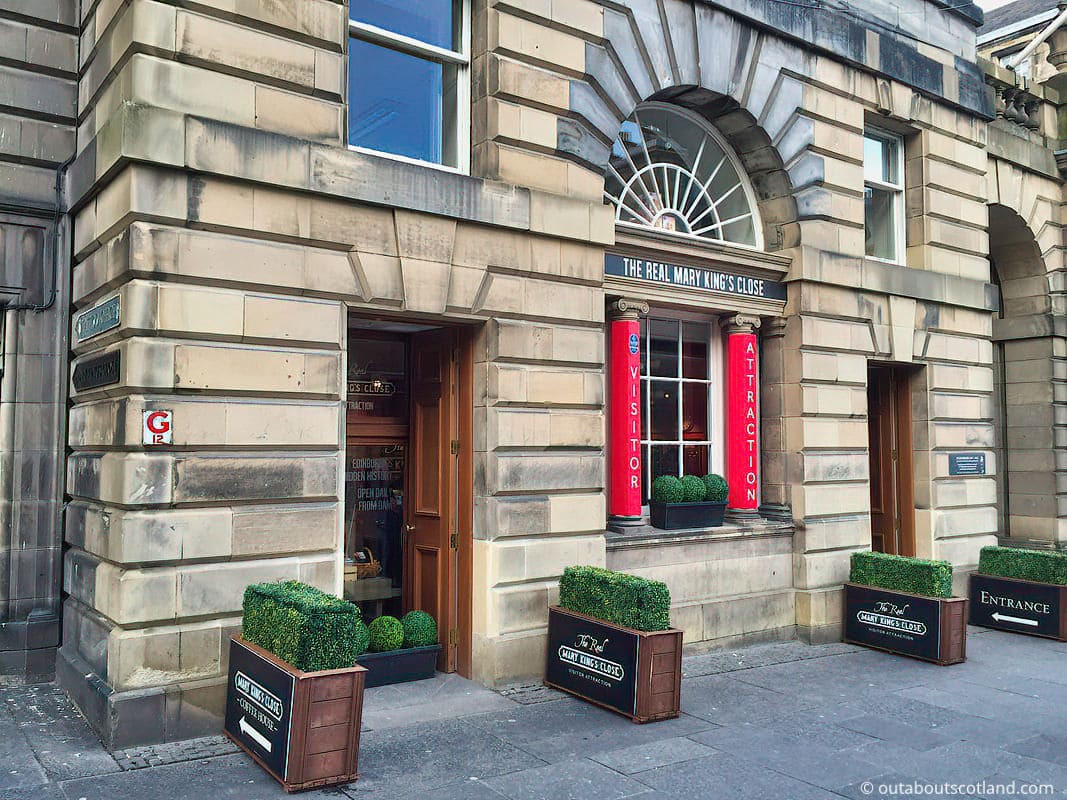
Real Mary King’s Close is an underground tourist attraction on the Royal Mile that takes visitors beneath the city streets to experience what life would have been like in the 17th century when Edinburgh was gripped by the devastating bubonic plague.
At that time, Edinburgh had virtually non-existent sanitation, and human waste was regularly thrown into the streets which attracted rats and the plague-carrying fleas that fed on them. During a visit, costumed guides take groups down into the original alleyways of Mary King’s Close where they will see how hundreds of people lived in filthy conditions and hear tales of the plague doctors who treated those unfortunate enough to contract the disease.
The guides also take groups into the deepest recesses of the underground chambers to visit some of the most haunted rooms in Scotland, including the spooky Annie’s Room which is said to be haunted by a 10-year-old girl. Elsewhere, there are videos that retell the stories of the people who lived on Mary King’s Close, including Mary King herself who was a wealthy burgess who owned a successful clothes shop.
As with many of Edinburgh’s earliest streets, Mary King’s Close fell into ruin and was eventually sealed up and used as the foundation for new buildings. However, it was eventually rediscovered and restored to how it would have looked in the 1600s.
The Royal Botanic Garden Edinburgh
- Address: Arboretum Place, Edinburgh, EH3 5NZ
- Contact details: Tel 0131 248 2909
- Out About Scotland complete guide: The Royal Botanic Garden Edinburgh
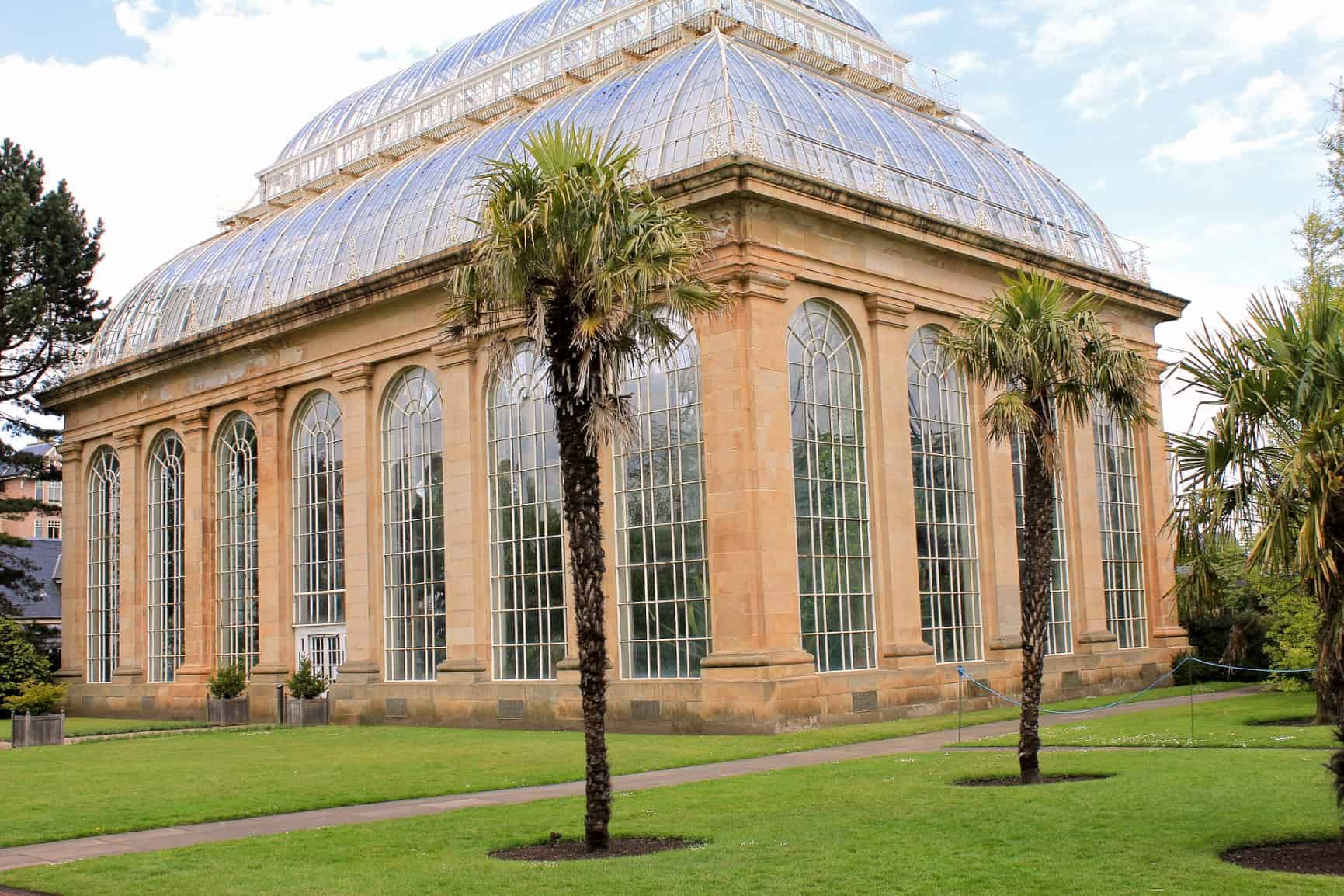
One of the best botanic gardens in the UK is located in Edinburgh, and a short bus ride from the city centre will allow you to explore over 13,000 different plant species in the most beautifully landscaped and manicured grounds you’re ever likely to see.
For tourists, the facilities at the RBGE easily match those found at any other Edinburgh attraction, with cafés, a restaurant, snack stations, a gift shop, and an information centre catering to the needs of visitors of all ages. Due to their immense size, the Royal Botanic Gardens can be entered via several different gatehouses, so it’s advisable to pick up a map at the visitor centre to get your bearings at the start of your visit.
Although the gardens are free to enter, it’s well worth paying the entrance fee to get into the premier attraction of the RBGE which is the incredible tropical jungle inside the main glasshouses. These glasshouses contain some of the oldest plants in the entire collection as well as some of the largest, which makes for a fascinating walk around 3,000 exotic plants that have been sourced from all over the world.
Other highlights include a woodland garden, an enormous tree collection, a rhododendron collection, alpine houses, and a botanic cottage (which is used for education and community sessions), while the visitor centre houses exhibitions and plant displays.
The Scott Monument
- Address: E. Princes St Gardens, Edinburgh, EH2 2EJ
- Contact details: Tel 0131 529 4068
- Out About Scotland complete guide: The Scott Monument
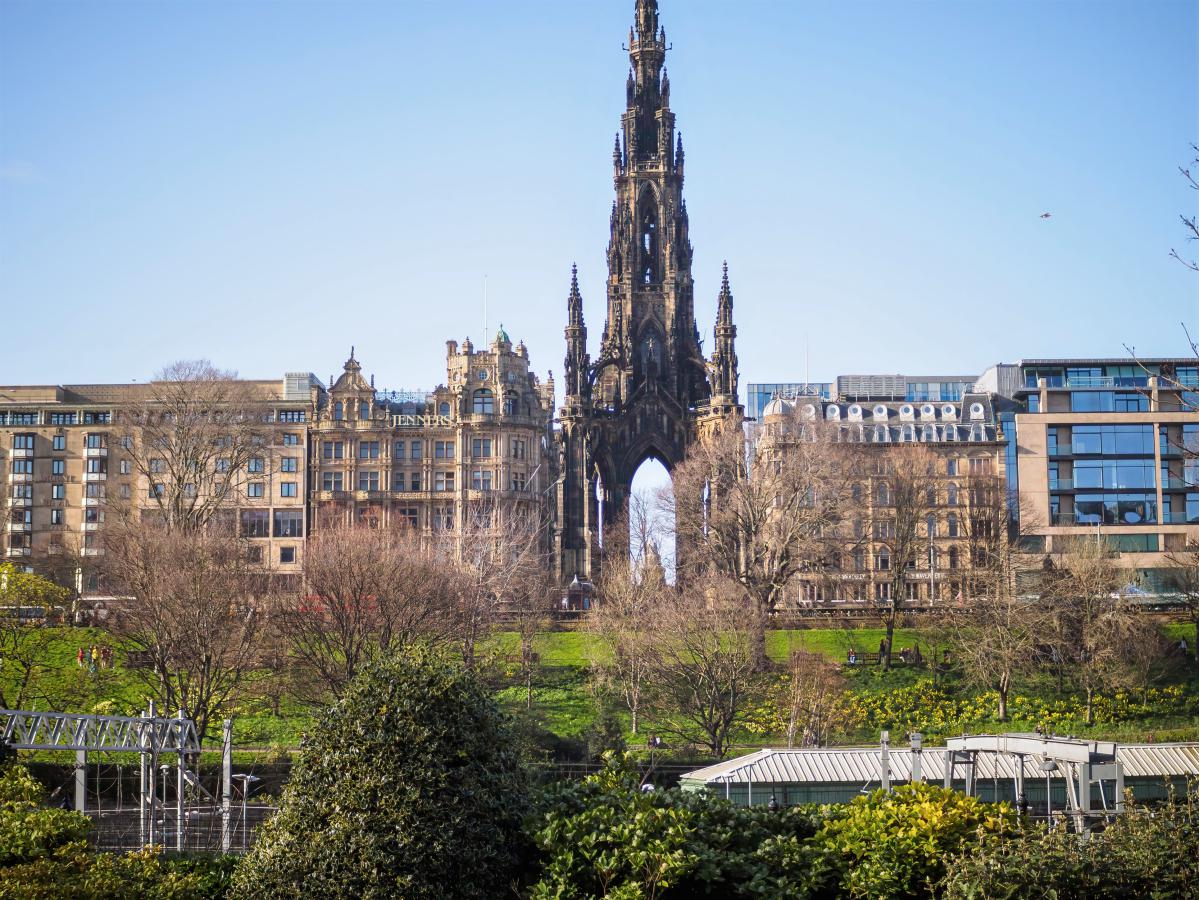
As mentioned earlier in this article, Princes Street Gardens is home to a number of landmarks, the most prominent being the 200-foot-tall Scott Monument. The monument was built in 1844 in dedication to the Edinburgh-born novelist Sir Walter Scott, and as well as being the most ornate structure in the city, it’s also the world’s largest monument dedicated to a writer.
For a modest fee, tourists can climb the 288 steps that wind their way to the top of the monument onto viewing platforms that offer superb views of Princes Street and Princes Street Gardens. The staircase is very narrow, and towards the top it’s difficult to climb up if another person is coming down, so anyone who’s afraid of small spaces might want to give this attraction a miss.
There’s more to the monument than the viewing platforms, though, as visitors can learn about Scott and his works in exhibitions housed on two of the floors, while those with sharp eyesight can try to find all 68 statues on the exterior.
A visit to this remarkable monument won’t take long (perhaps plan a half hour), but it’s an absolute must-do and something I guarantee will be one of the most memorable parts of your visit to Edinburgh.
| Edinburgh Sightseeing Advice |
|---|
| Planning to visit Edinburgh’s top attractions? You’ll save time and money by purchasing a pre-paid hop-on hop-off bus pass. |
| The pass allows unlimited travel in Edinburgh for 48 hours and includes free entry to Edinburgh Castle, the Royal Yacht Britannia and Holyrood Palace. |
| Buy your Royal Attractions Bus Pass here. |
Frequently Asked Questions
Is Edinburgh good for a family holiday?
Edinburgh is a great destination for families of all ages. As well as hosting 12 major cultural events each year (including The Fringe, the world’s biggest arts festival), Edinburgh was the first city to be granted the title of UNESCO City of Literature and it’s one of the few cities on the planet to have its centre elevated to UNESCO World Heritage Site status.
World-class family attractions include Dynamic Earth, Edinburgh Castle and Camera Obscura.
How do I travel to Edinburgh?
Edinburgh Airport lies 5 miles to the west of the city centre and has regular public transport links across the city and the surrounding areas.
A regular airport bus is operated by Lothian Buses (the Airlink 100 service) which runs every 10 minutes, 24 hours a day from Waverley Bridge.
When are Edinburgh’s annual festivals?
Edinburgh International Science Festival: 4th to 19th April.
Edinburgh International Children’s Festival: 20th to 31st May.
Edinburgh International Film Festival: 17th to 28th June.
Edinburgh Jazz & Blues Festival: 17th to 26th July.
Edinburgh Art Festival: 30th July to 30th August.
Edinburgh Festival Fringe: 7th August to 31st August.
Royal Edinburgh Military Tattoo: 7th August to 29th August.
Edinburgh International Festival: 7th to 31st August.
Edinburgh International Book Festival: 15th to 31st August.
Scottish International Storytelling Festival: 16th October to 31st October.
Edinburgh’s Christmas: Late November to Early January.
Edinburgh’s Hogmanay: 30th December to 1st January.
Where can I take my kids in Edinburgh?
Edinburgh Castle, Holyrood Palace, Holyrood Park, Calton Hill, The Royal Yacht Britannia, Edinburgh Zoo, The Royal Botanic Gardens, St. Giles Cathedral, The Royal Mile, The Scottish National Galleries, The National Museum of Scotland, Greyfriars Kirk, The Scott Monument, Dean Village.

